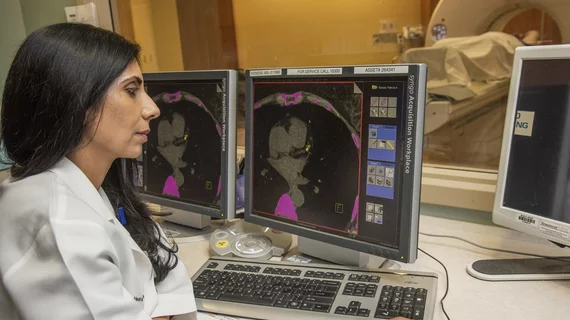Cardiac CT scans are a more effective resource than genetics data when predicting a person’s risk of coronary heart disease (CHD), according to new research published in JAMA.[1] The study focused on patients between the ages of 45 and 79 years old.
“Finding the best way to identify who is at risk for developing heart disease can help determine what needs to be done to lower their risk,” lead author Sadiya Khan, MD, MSc, an assistant professor of medicine and preventive medicine at Northwestern University Feinberg School of Medicine and cardiologist with Northwestern Medicine, said in a prepared statement. “This finding can help doctors and patients in managing risk for heart disease, which is the leading cause of death in the United States.”
Khan et al. examined data from more than 3,200 patients originally treated in either the United States or the Netherlands, predicting CHD risk passed on different criteria. The team started by predicting CHD risk based on traditional risk factors—blood pressure and cholesterol, for example—and then evaluated how coronary artery calcium scores gathered via CT imaging and genetics data impacted the accuracy of those original predictions. Participants were followed for up to 17 years.
Overall, the data indicated that both coronary artery calcium scores and genetics data can be helpful tools for predicting a patient’s 10-year CHD risk. However, only adding coronary artery calcium data to traditional risk factors was associated with “improved risk discrimination and risk reclassification for CHD.” For instance, adding CT findings helped researchers determine that many more study participants faced a high risk of CHD and should be considered for statin therapy. Adding genetics data to the mix was not associated with a similar benefit.
“This study directly addresses a key knowledge gap identified by the recent American Heart Association Scientific Statement, among others, expressing a need to directly compare polygenic risk scores with coronary artery calcium scores for predicting risk of CHD,” Khan et al. wrote. “The present study is the first, to our knowledge, to compare risk discrimination with polygenic risk score and coronary artery calcium score in the same analytic sample as is needed to inform a direct comparison of these two novel markers.”
Read the full analysis here.

